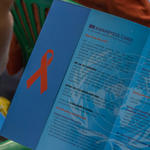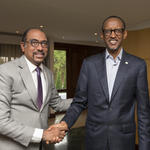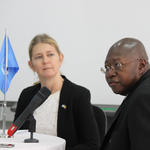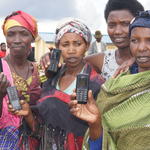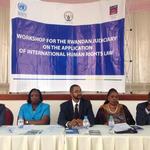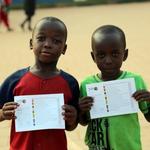- Human Development
One Rwanda marks World AIDS Day
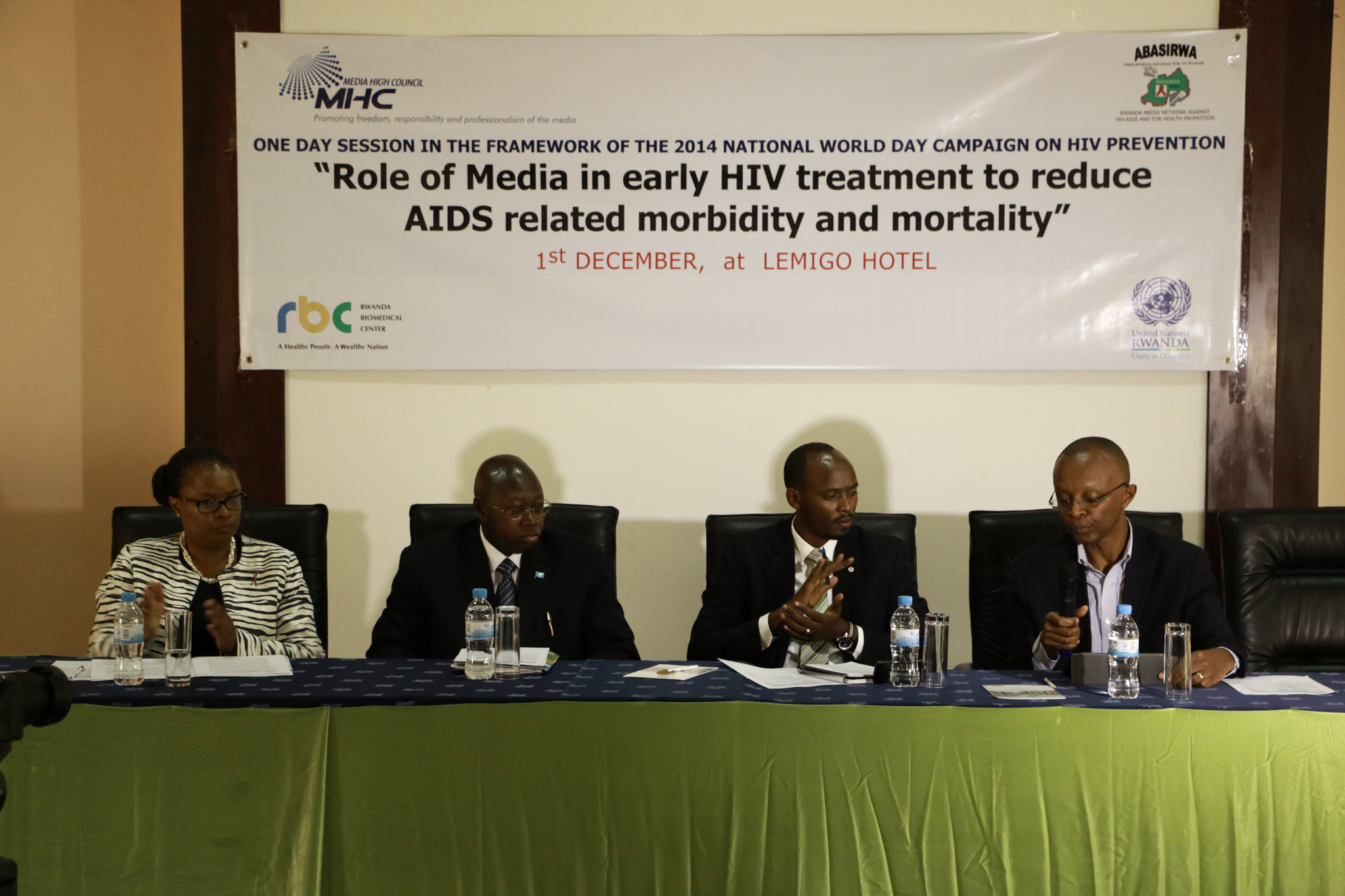
On 1 December, the One UN in Rwanda today joined the rest of the world in marking the World Aids Day in an event in the Lemigo hotel in Kigali. The theme in Rwanda focused on the “Role of the Media in early HIV treatment to reduce Aids-related morbidity and mortality” spearheaded by the Rwanda Biomedical Centre.The head of HIV division at Rwanda Biomedical Centre (RBC), Dr Sabin Nsanzimana, explained that “The WAD is the starting point during which we will launch a one-year campaign of engaging the media in promoting HIV/Aids awareness.”
In Rwanda, statistics from the Ministry of Health show that on average, one or two persons are infected with HIV every hour in the country. The current prevalence of HIV/Aids in the country among adult population aged from 15-19 has remains at 3 per cent in the last five years, estimated at 206,000. HIV prevalence among children is about 1,000. Prevalence rates are particularly high among the female sex workers (FSWs), standing at 51 per cent nationally and 56% in Kigali. In addition, HIV incidence among adolescents has in recent time, shown an increase, especially young girls.
By the end of last year, the country had registered 48 per cent success in eliminating new infections and reduced the number of infected people from five to two per hour in the last five year. Rwanda also intends to raise condom use by 13 per cent, decreasing the estimated new infections in children from 1,000 to less than 200 and increase the fraction of male adult circumcision from 13 per cent to 66 per cent by 2018.Notable progress has also been made towards achieving universal access to HIV treatment, prevention care and support. Based on current eligibility criteria, more than 94% of adults requiring ARVs have access to them. Rwanda has also seen a reduction by more than half in new infections. Prevention of mother-to-child transmission (PMTCT) services are available in over 90 per cent of health facilities and HIV testing among women has increased by almost a third since 2005.
In the presence of UN Resident Coordinator Lamin M. Manneh, UNAIDS Country Coordinator Sibongile Dludlu welcomed the theme Rwanda chose for the Day this year, saying the media was critical in fighting the disease.“The media should highlight, support and advocate for ending the AIDS epidemic. It should continue to strive to accurately inform all on HIV testing and early access to treatment. This will involve civil society organizations, such as ABASIRWA and all media. It is laudable that the network continues to do this work and, on behalf of the UN family, we assure you that we will continue to avail technical support”.
Globally, HIV continues to be a major global public health issue, having claimed more than 39 million lives so far, according to WHO statistics.In 2013, 1.5 million people died from HIV-related causes globally. There were approximately 35.0 million people living with HIV at the end of 2013 with 2.1 million people becoming newly infected with HIV in 2013 globally.Sub-Saharan Africa is the most affected region, with 24.7 million people living with HIV in 2013. The same sub-region accounts for almost 70 per cent of the global total of new HIV infections.
In 2013, 12.9 million people living with HIV were receiving antiretroviral therapy (ART) globally, of which 11.7 million were receiving ART in low- and middle-income countries. The 11.7 million people on ART represent 36 per cent of the 32.6 million people living with HIV in low- and middle-income countries.
Paediatric coverage is still lagging in low- and middle-income countries. In 2013, less than 1 in 4 children living with HIV had access to ART, compared to over 1 in 3 adults.

